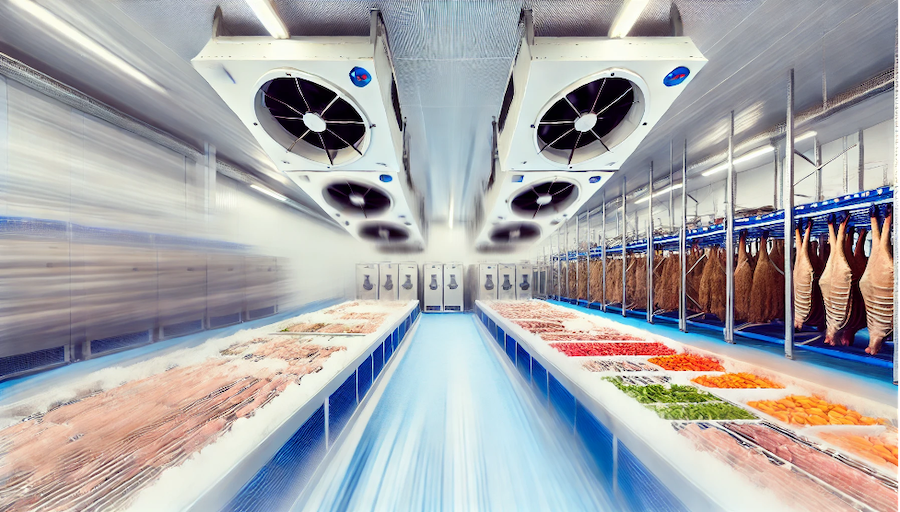Food preservation is a critical aspect of the global food industry, ensuring that perishable items remain safe and of high quality from the point of production to the consumer. One of the most significant advancements in food preservation is blast freezing, a technique that has revolutionized the way we store and manage food products. In this article, we'll explore how blast freezing works, its benefits, and why it has become a game-changer in food preservation.
1. Understanding Blast Freezing Blast freezing is a process that involves rapidly freezing food products at extremely low temperatures, typically around -30°C to -40°C (-22°F to -40°F). This rapid freezing process is achieved by using powerful fans to circulate cold air at high speeds, which quickly reduces the temperature of the food. Unlike traditional freezing methods, which can take hours or even days, blast freezing can freeze food in a matter of minutes.
2. Benefits of Blast Freezing The rapid freezing process of blast freezing offers several benefits over traditional freezing methods:
- Preservation of Quality: Blast freezing prevents the formation of large ice crystals, which can damage the texture and flavor of food. By freezing food quickly, blast freezing maintains the quality, taste, and nutritional value of the product.
- Extended Shelf Life: By rapidly lowering the temperature of food, blast freezing effectively halts the growth of bacteria and other microorganisms that can cause spoilage. This extends the shelf life of food products, reducing waste and improving profitability.
- Safety and Compliance: Blast freezing is an effective method for ensuring food safety, as it minimizes the risk of contamination and pathogen growth. This is particularly important for industries like seafood and meat processing, where food safety is paramount.
- Versatility: Blast freezing is suitable for a wide range of food products, from fruits and vegetables to meats, seafood, and ready-to-eat meals. This versatility makes it an essential tool for food manufacturers and processors.
3. Applications of Blast Freezing in the Food Industry Blast freezing is widely used across various sectors of the food industry:
- Seafood Processing: Seafood is highly perishable and requires rapid freezing to maintain freshness and quality. Blast freezing is commonly used in the seafood industry to preserve products like fish, shrimp, and shellfish.
- Meat Processing: Blast freezing is essential for preserving the quality of meat products, including beef, pork, and poultry. By freezing meat quickly, blast freezing prevents the loss of moisture and maintains the texture and flavor.
- Fruits and Vegetables: Blast freezing is used to preserve seasonal fruits and vegetables, allowing them to be enjoyed year-round. This process also helps retain the nutritional value and vibrant colors of the produce.
- Ready-to-Eat Meals: The convenience of ready-to-eat meals has made them increasingly popular among consumers. Blast freezing ensures that these meals retain their taste and texture, even after long periods of storage.
4. Environmental Considerations While blast freezing offers numerous benefits, it's important to consider the environmental impact of the process. The energy consumption of blast freezers can be high, so it's essential for companies to implement energy-efficient practices and explore the use of renewable energy sources.
Blast freezing has revolutionized food preservation by offering a fast, efficient, and effective way to freeze food products while maintaining their quality and safety. As the food industry continues to evolve, blast freezing will remain a vital tool for ensuring the availability of high-quality, safe food products to consumers around the world.


